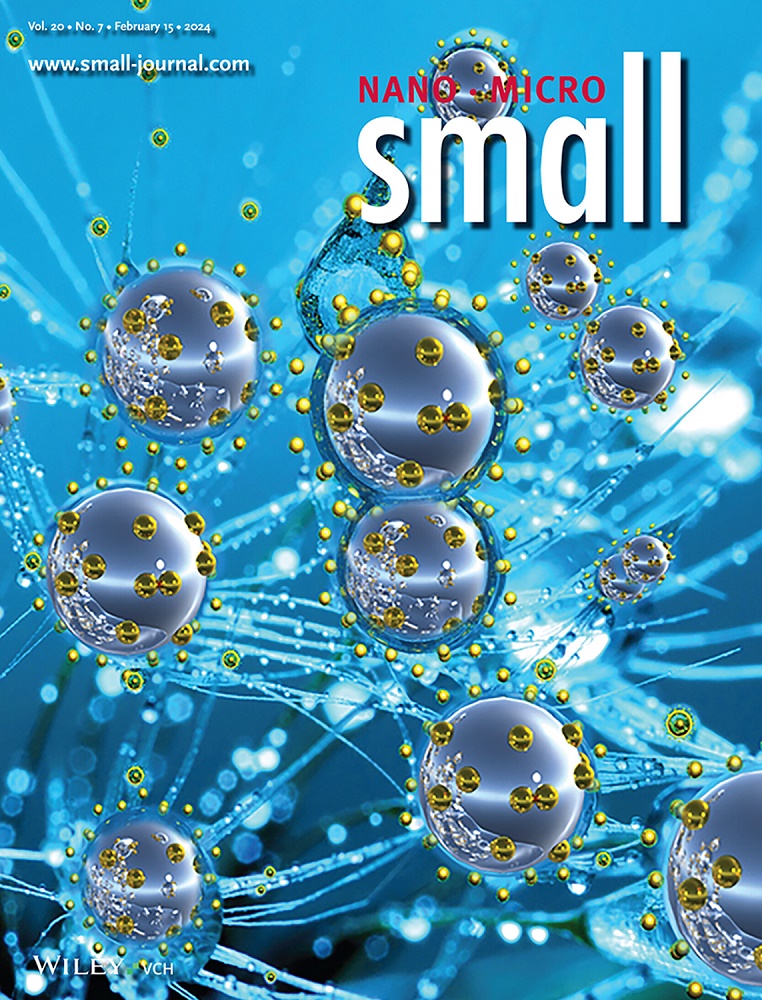Resolving Nanoslip, Solvation Inertia, and Charge Dynamics at Vibrating Solid-Liquid Interface.
IF 12.1
2区 材料科学
Q1 CHEMISTRY, MULTIDISCIPLINARY
引用次数: 0
Abstract
When a liquid contacts a charged solid surface, counterions in the liquid accumulate near the interface-a process traditionally described by models such as Helmholtz, Stern, and Debye-Hückel. However, these frameworks overlook the complex interplay between inertia and surface charge, and they simplify ions as mere point charges. This study employs vibrating solid surfaces to decouple and investigate the effects of inertia, ion-slipping, and electrostatic interactions at the molecular scale. This approach reveals "inertial layer" in the initial liquid strata, which plays a critical role in governing interface dynamics. Within this layer, a tunable Helmholtz zone is identified, where mechanical stiffness and electrostatic forces adjust in response to ion concentration. Beyond this lies a Debye screening region characterized by repulsive forces and electrostatic decoupling from the double-layer capacitor model. Using phosphate-buffered saline (PBS) as a model electrolyte, it is demonstrated that low ionic strength enhances interfacial stability, while high concentrations increase electrostatic repulsion, influencing nanoscale mechanical behavior. These insights refine the understanding of interfacial phenomena and hold significant implications for biosensing, catalysis, and energy storage technologies.固液界面的纳米滑移、溶剂化惯性和电荷动力学。
当液体接触带电固体表面时,液体中的反离子在界面附近积聚——这一过程传统上由Helmholtz、Stern和debye - h ckel等模型描述。然而,这些框架忽略了惯性和表面电荷之间复杂的相互作用,它们将离子简化为单纯的点电荷。本研究采用振动固体表面来解耦,并在分子尺度上研究惯性、离子滑动和静电相互作用的影响。该方法揭示了初始液体地层中的“惯性层”,它在控制界面动力学中起着关键作用。在这一层,可调亥姆霍兹区被确定,其中机械刚度和静电力调整响应离子浓度。除此之外,还有一个德拜屏蔽区,其特征是斥力和双层电容器模型的静电去耦。以磷酸盐缓冲盐水(PBS)为模型电解质,证明了低离子强度增强了界面稳定性,而高浓度会增加静电斥力,影响纳米尺度的力学行为。这些见解完善了对界面现象的理解,并对生物传感、催化和能量存储技术具有重要意义。
本文章由计算机程序翻译,如有差异,请以英文原文为准。
求助全文
约1分钟内获得全文
求助全文
来源期刊

Small
工程技术-材料科学:综合
CiteScore
17.70
自引率
3.80%
发文量
1830
审稿时长
2.1 months
期刊介绍:
Small serves as an exceptional platform for both experimental and theoretical studies in fundamental and applied interdisciplinary research at the nano- and microscale. The journal offers a compelling mix of peer-reviewed Research Articles, Reviews, Perspectives, and Comments.
With a remarkable 2022 Journal Impact Factor of 13.3 (Journal Citation Reports from Clarivate Analytics, 2023), Small remains among the top multidisciplinary journals, covering a wide range of topics at the interface of materials science, chemistry, physics, engineering, medicine, and biology.
Small's readership includes biochemists, biologists, biomedical scientists, chemists, engineers, information technologists, materials scientists, physicists, and theoreticians alike.
 求助内容:
求助内容: 应助结果提醒方式:
应助结果提醒方式:


